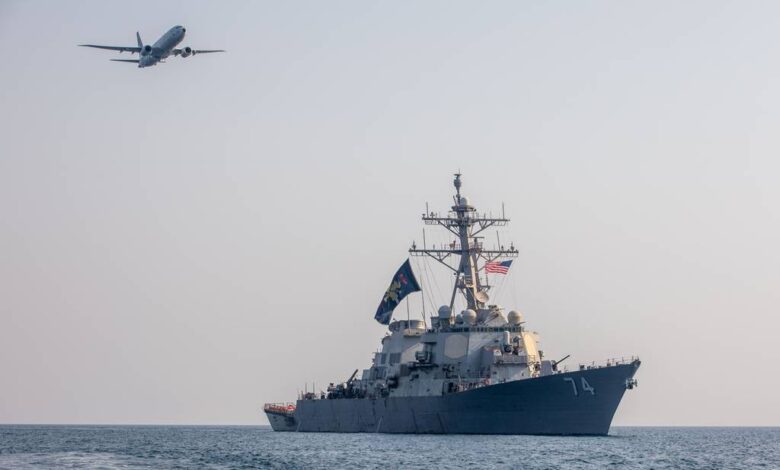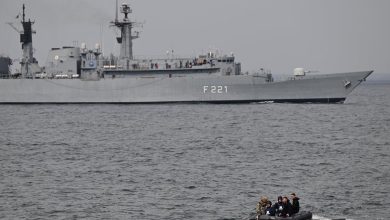In platform design and construction, the best surprise is no surprise

This is part of a series exploring ways to strengthen the U.S. Navy’s fleet. Click here to see the entire series.
When it comes to naval capacity, the more the better. This includes platforms like guided-missile destroyers (DDG) — the current and future backbone of the surface force — that remain critical to the U.S. Navy’s missions and, by extension, America’s defense-industrial base.
As the Navy considers transitioning procurement to the next-generation surface combatant, called DDG(X), in fiscal 2032, the case of the ubiquitous Boeing 737 airliner can provide a useful guide to ensure these ships are scalable, affordable and relevant.
Indeed, similarities abound between airliner manufacturing and destroyer construction. Both involve corporate duopolies, large-scale production, detailed assembly, multiple supply vendors, a slow-grown workforce and rising demand.
Moreover, the newest 737 and DDG are hardly designs created from the ground up; they evolved from successful predecessors as missions and environments necessitated — remodeled rather than rebuilt.
In short, these platforms leveraged new technologies incrementally to mitigate risk, avoid obsolescence and keep pace with requirements. So as the Navy considers ways to bolster production of its preeminent surface combatant and design its successor, it should study lessons from Boeing’s history with 737s.
Incremental innovation yields efficiencies by building upon previously proven work. Boeing’s enduring, modified 737 design has allowed the company to maintain a hot production line with forecast output of a staggering 57 planes per month by next summer. Similarly, the stable Arleigh Burke-class DDG-51 blueprint allows shipbuilders to work on multiple hulls simultaneously.
RELATED
Economies of scale in training, crewing and maintenance cut costs and make equipment and people interchangeable — a business strategy employed by airlines like Southwest and Alaska, which operate fleets almost entirely of 737 variants. Similarly, the Navy operates 73 DDG-51s and has plans to field at least 90.
Therefore, using the current destroyer’s hull, mechanical and electrical layouts as a starting point — a design strategy that commercial shipbuilders employ to great effect — obviates the need to wholly reconfigure shipyards and retrain the workforce, which can induce production and hiring delays.
Furthermore, iterative design must consider size, weight and power-growth potential. The 737 airframe and DDG-51 hull were designed with space and power for future growth — an open-architecture concept fundamental to their long-running success.
For example, Boeing’s P-8A Poseidon, a militarized 737 used for anti-submarine warfare and reconnaissance, delivered legacy capability to bridge the gap until its predecessor, the P-3C Orion, retired. Subsequent increments added improved sensors and tactical data links for detection and targeting. Further upgrades will transform the plane’s weapons capabilities, intelligence collection operations and processing power.
Similarly, while the first DDG-51 was designed before the advent of personal computers or email, the newest Aegis combat information centers have evolved into their modern glass cockpit design. And hulls have been modified over time to fit helicopter hangars, new radars and silhouette-altering hardware.
Consequently, an iterative approach — using better existing, rather than revolutionary, unproven technologies — can underwrite a platform’s availability. For ships, it allows program managers to reinvest time and capital into things like energy-efficient systems that can maximize operational endurance, or new power schemes to drive directed-energy weapons with unlimited magazines, all at relatively low risk.
Incremental innovation also keeps supply chains strong and assembly lines uninterrupted. Another benefit of building off stable platform designs is the ability to adopt thriving networks of sub-vendor supply chains. This creates business predictability and assured access to original equipment manufacturer parts that enhance system readiness and reliability.
Additionally, strong and diversified supply chains are critical to controlling costs, especially when supplier competition is limited, vendors hail from the same geographic area, disasters cause disruption or currency fluctuates.
History has demonstrated that building sub-vendor capacity is difficult once initial contracts are signed because sunk costs make new business unprofitable. Moreover, interrupting hot production lines can create delays or cost overruns — something the Navy experienced when it closed (and subsequently reopened) the Arleigh Burke line to shift to Zumwalt-class construction.
Proven production also attracts allies. For example, nine countries already or plan to fly the P-8A maritime patrol aircraft. Allies recognize the value of evolutionary programs that allow them to interoperate with the U.S., keep growth affordable and minimize their risk as others expend research dollars before agreeing to foreign military sales.
Some, like Australia, ink cooperative development contracts that permit the defining of combined requirements ahead of the design phase.
The U.S. and its naval partners have benefited from collaboration in everything from missiles to fighter jets. Consortium approaches also offer potential for shipbuilding, where allies operate similar naval combatants and shipyards whose capacity can be leveraged to overcome domestic constraints. Future combatant design should embrace commonalities and pursue collaborative production to increase fleet capacity on time and on budget.
To be sure, recent headlines and congressional hearings have spotlighted how prioritizing quality controls and safety cultures are essential to preserving taxpayer investments and upholding institutional trust. Questioning attitudes about engineering modifications or equipment dissimilarities are essential. And program experts should be mindful that single points of mechanical or electrical failure, including in navigation, steering and engine design, can be unrecoverable both in the air and at sea.
Nevertheless, as the Navy considers its broad approach to the next large surface combatant, which could sail until the end of the century, it should start by innovating on proven designs that leave room for growth. This strategy of building a little and learning a lot is a pragmatic way to expand warship capacity while mitigating risk.
After all, as Holiday Inn’s revolutionary 1950s ad campaign proclaimed: “The best surprise is no surprise.”
Cmdr. Douglas Robb commanded the U.S. Navy’s guided-missile destroyer Spruance, and is currently a U.S. Navy fellow at the University of Oxford. Capt. Wayne Lewis is the deputy commander of Patrol and Reconnaissance Wing 10, and has served as a test pilot for the Boeing-made P-8 Poseidon. The opinions expressed in this commentary are those of the authors and do not reflect the views of the U.S. Defense Department, the Department of the Navy nor the U.S. government.
This is part of a series exploring ways to strengthen the U.S. Navy’s fleet. Click here to see the entire series.







